Neuro-linguistic programming
NLP or Neuro-linguistic programming is defined as a method to treat someone’s anxiety, disorders, thoughts, and behavior leading to the desired outcomes, such as personal happiness. It is derived from two words, Neuro and linguistic. Neuro means something related to the nervous system of a human being, and linguistic means being expressible and verbal. Thus, Neuro-linguistic programming is a practical method to help people overcome their lives’ negative outcomes and enhance their mental well-being.
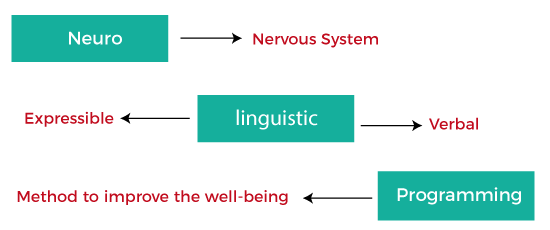
Here, we will discuss concept of Neuro, linguistic and programming in NLP, seven powerful techniques of NLP, history of NLP, NLP vs. traditional therapies, logical levels of NLP, and more.
Concept of Neuro, linguistic and programming in NLP
Why we have used programming with it? Let’s discuss the three terms Neuro, Linguistic, and Programming in detail for better understanding and the concept of programming word.
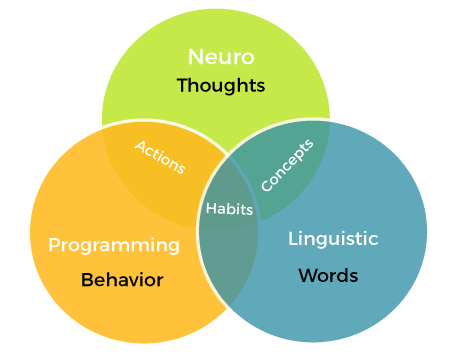
Neuro
It refers to the state of mind, which affects the way we communicate and behave. The mind or nervous system controls the actions, thoughts, and movements of the body. It is also known as the command center of the body. Neuro-linguistic programming teaches the methodology of viewing the state of mind that shows how to change things and actions.
Linguistic
It means that our state of mind can be represented through the language we speak or non-verbal communication (actions, movements, facial expressions, and body language). Language is the main component that we use to gain knowledge and store in our minds. It is also used to express our feeling and words.
We can collectively say that Neuro-linguistics depicts how language is represented in the human brain, expressed in actions, words, thoughts, and what factors can change knowledge and language.
Programming
We live because our mind is programmed the way we think, speak, learn, walk, beliefs, reactions, etc. We program ourselves to react during situations suddenly.
It happens many times that a person says something, and his body language depicts something else. It means that they are just representing 7% of what they are saying. The actual words are the part of non-verbal communication that constitutes 93%.
For example, a person invites us to a party, but they are not willing to invite us. His words and invitation are conveying only 7-8%. Rest 93% is their body language that depicts something else. It can be anything going around a person’s mind.
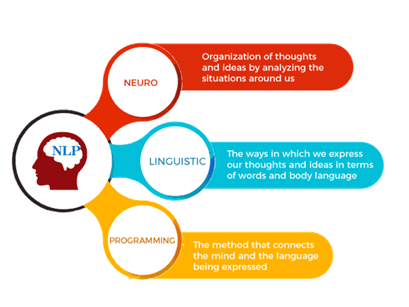
Thus, Neuro-linguistic programming is the other 93% of communication. It is a system that describes the communication that matters. Non-verbal communication is its main objective and is real communication. It helps people to overcome the inner communications stress and makes them expressible and verbal.
History of NLP
- The NLP was created by John Grinder and Richard Bandler in California, United States in 1970.
- John Thomas Grinder is an author, trainer, speaker, and a linguistic (scientific study of language). He was born on January 10, 1940.
He is a co-creator of the NLP and co-director of Quantum Leap Incorporation. At an international level, he also runs seminars and workshops on Neuro-linguistic programming. - Richard Bandler is an American author born in 1950. He is a consultant in the field of self-improvement of self-help. He is also a founder of NLP with John Grinder, as mentioned above.
- At 20, Bandler met Grinder in the University (C Santa Cruz) and became friends. Bandler was a psychology student at that time, and Grinder was an associate professor of linguistics in that college.
- Bandler was a student of computer science and began his interest in the field of behavioral science. NLP is also said to arise from the field of CS (Computer Science) and a linguist.
- John Thomas Grinder and Richard Bandler also considered social scientists and linguistics theoretic, namely Gregory Bateson and Noam Chomsky. They also adopted the ideas and techniques of an American author, namely Carlos Castaneda.
- They studied and added what worked and removed what didn’t work.
- Bandler first modeled the work of an American author and an international therapist, namely Virgina Satir (1916- 1988). They termed that model as the Meta model.
- Grinder and Bandler thought that such a model could be produced by challenging users’ thoughts and language. The underlying challenge on the linguistic distortion may also provide a deep structure and, therefore, a healing benefit. They also derived future pacing and anchoring from such a system.
- Grinder and Bandler also modeled the work of Fritz Perl. He was born in 1893 and died in 1970. Perl developed a therapy known as gestalt therapy. He has also led various seminars based on gestalt therapy at Esalen.
- After that, NLP started marketing it as a business tool. It believed that a human being can do anything.
- Around 150 students attended the workshop on NLP at the Santa Cruz, paying $1000 each.
- Grinder and Bandler decided to give up writing and started writing books based on the seminar transcripts.
- In 1975, their first book ‘The Structure of Magic’ was published. The second volume of the same book was released in 1976. Both the books were based on the techniques by Virgina Satir and Fritz Perl.
- The book named Forges into Princess sold more than 270,000 copies.
- In 1980, they made more than $800,000 from the book sales and workshop organization.
- Though, during 1990s, NLP saw a decline due to the lack of empirical support.
Today, it is a widely adopted programming worldwide. The practitioners use it to improve job progression, productivity, and therapy for people with psychological disorders.
Seven powerful NLP techniques
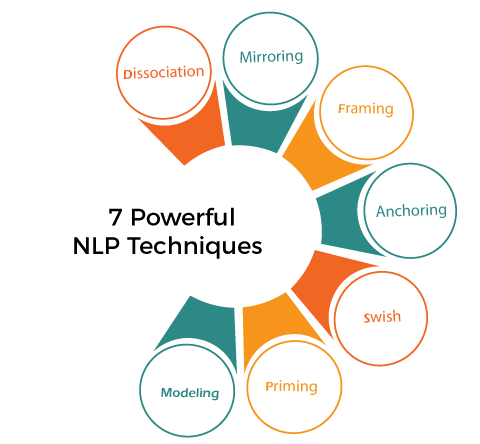
The seven powerful NLP techniques are dissociation, mirroring, framing, anchoring, swish, priming, and modeling. The words may sound difficult, but they have a deep and clear understanding. All the NLP techniques are practical and have gained attention and popularity form, various entrepreneurs and practitioners.
Let’s discuss this in detail.
Dissociation
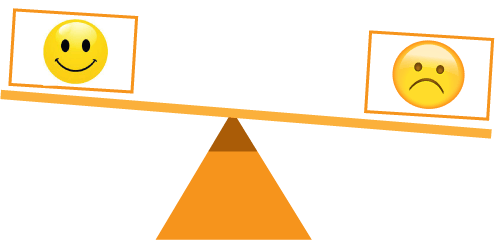
Dissociation means the separation of the negative aspects from our life. It is the essential technique during the initial stage. We need first to identify the negative things in our life that we want to get rid of. We do not want such things to be a part of our life, such as fear, jealousy, discomfort, rage, etc. Look at ourselves with the negative emotion and without the negative emotion. Find out the difference, and automatically it will help us to keep away from that emotion.
Mirroring
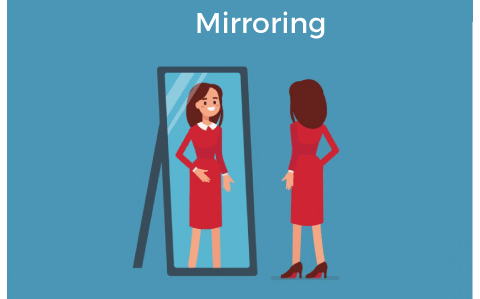
The actual rule of what our body speaks and shows is divided into 7-38-55. It means 7% is actually what we speak, 38% is our body language, and 55% is the actual message. It is also called as rapport, which specifies the connection of our body with others. When a person acts or behaves the same way another person, it increases trust between them. For example, if a person is full of energy, we can also match that energy level, or if the person is happy, we must feel excited to share their happiness.
Reframing
It means to place ourselves in the new frame, i.e., to be positive even if we hear negativity. Let’s consider the best example of the Group Discussion (GD). Some candidates during the discussion are confident and happy because they consider GD as an exciting challenge to learn and grow. While some candidates are nervous, stressed with shivering legs, sweaty hands, and accelerated heart rate. It is because the confident ones have positively reframed the GD. Even if someone asked, are you nervous, they reply that we are super excited? It signifies to stay in positivity, even if we hear negativity.

According to the above image, a person can reframe the situation differently, either positively or negatively. We need to ensure to always opt for the positive side.
Anchoring
Anchoring refers to the imagination or creating a pre-mindset. Whenever we desire to eat sometime, we first create a mindset of how it looks and tastes. The same happens when we pose for a picture or prepare ourselves two minutes before an interview. It is all because of our mindset that we have created before any situation.
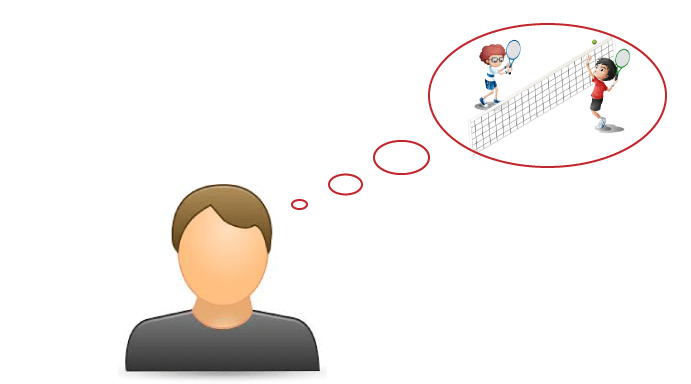
We are usually told to close our eyes and then think of any moment, person, emotion, thing, object, etc. It creates the neurological stimulus response, which allows us to go back to the corresponding feeling or situation. All these things increase our chances of succeeding.
Swish
Swish is the process of removing unwanted link that brings negativity to the mind. For example, a habit of smoking puts our hand to the mouth. Swish is one of the effective techniques used by practitioners to help people to quit bad habits. These links also connect our emotions, and working on the removal of such habits creates a large difference in an individual’s life.
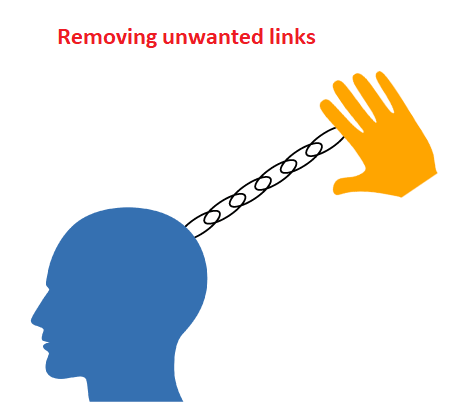
Priming
Priming is the type of advertisement or a quote. It provides a type of change in the person’s behavior, which means exposing someone to something that influences them. For example, reading positive ad influencing books in the morning provides us the positive vibes, enthusiasm, confidence, and freshness for the whole day. Hence, most people recommend reading such types of books in the morning.

Another example is the presence of positive quotes, picture of famous writers or inventors, etc. on the walls of schools. It is to increase the interest of students in studies. It also creates a positive environment for the students and teachers.
Modeling
Modeling means to follow and shape self in the desired manner. The modeling concept in NLP is based on the law of attraction, which specifies that we usually model ourselves based on the people around us. For example, to qualify any exam or grab a job, we usually recommend communicating with people successful in their respective fields. It means that we would like to communicate or watch the videos or interviews of the toppers in the respective exam. It is because we model ourselves based on their achievements and advice. Thus, the more we surround our life with successful, positive, polite, and hard-working people, the more we will be able to overcome our problems.

NLP vs. traditional therapy
Most of us often know about the traditional therapies that provides relief from various mental issues. It is a regular counseling process that requires a counselor with whom we can share our problems. It is an expensive process because we regular need a counseling session with a counselor. Both methods are connected with the body have different approaches.
Let’s discuss some differences between Neuro-linguistic programming and traditional therapies.
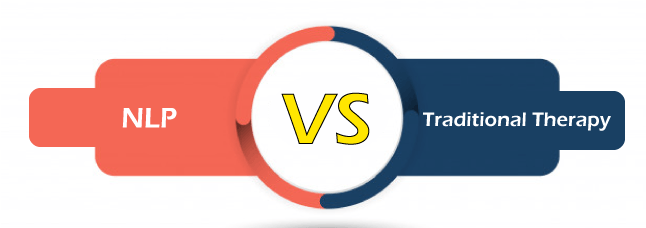
| Category | NLP (Neuro-linguistic Programming) | Traditional therapy |
|---|---|---|
| Structure | It is based on modeling. | It is based on theory rather than modeling. |
| Resources | The NLP process encourages people to select the resources according to their wishes. | The counselors or psychotherapists determine the resources in therapies. |
| Analyzing of the past | It does not require analyzing the past conditions of a client to look at his current situation. | It requires analyzing the past conditions of a client to look at his current situation. |
| Profession | NLP practitioners are not called doctors. | The therapists are generally called doctors. |
| Model | Few structures, daily practice, and few sessions are enough to treat the person’s mental illness. | It is a long term process and requires regular assessments with the doctors to talk and build trust. |
Problems NLP can treat
NLP can treat various problems, such as near-sightedness or myopia, phobia, allergy, common cold, mental disorders, and learning disorders. But, we may wonder how NLP can treat such problems.
Let’s discuss.
Improving Eyesight
NLP has been known for changing the perspective of an unconscious mind and help people in achieving excellence. But, how it improves eyesight?
NLP practitioners consider eyesight issues as subjective. According to them, verbal impulses sent to the unconscious mind can help people to improve their poor vision.

For example,
It is our habit to place a pen in the pen’s stand. If we misplaced it somewhere else, like in the drawing-room, we would not be able to find it even we have already seen that place. It means that our mind is set to a specific place (pen’s stand), and we may not find it easily at another place. Thus, we can conclude that people do not tend to see an object in an unexpected place (in this case, in the drawing-room).
Just like physical therapies help people use their limbs again; similarly, some exercises would help improve eyesight. We only need to be consistent and regular while practicing eye exercises. In a short time, we will surely see improvements in our eyesight.
Reducing anxiety and mental stress
According to NLP practitioners, stress, anxiety, and other mental disorders are a part of the human thought process. Even the covid-19 has been a part of the current mental health crisis. Today, many people opt for personality development, therapies, and self-help books due to the increased number of mental cases.

NLP works by identifying and changing the thoughts and behavior that lead to mental stress and focusing on removing such issues for an individual’s mental well-being and state of happiness. The three things that can resolve mental issues are happiness, love, and passion.
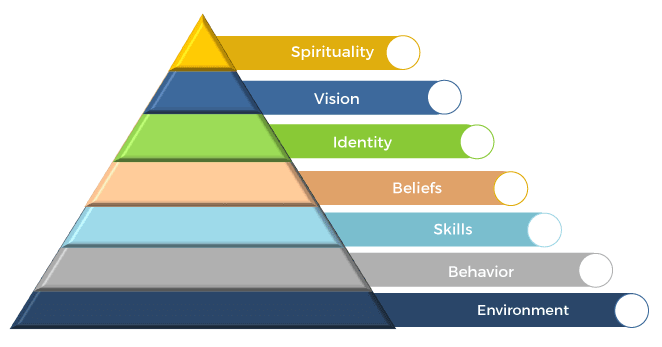
Logical levels of NLP
There are seven logical levels of Neuro-linguistic programming, which are as follows:
Spirituality
It is the highest level of change that modifies the person from inside as well as outside. It describes the strong relationship with the highest power – God. Prayer and meditation are the two things that describe a person’s relationship with God. It increases the inner satisfaction and state of happiness of an individual.
The change in the higher level will automatically affect the levels beneath it. The spirituality level states that we are born in a material world where life is dominated by fear, ego, and power. Nothing here belongs to us and nothing will go with us when we will leave the world. During the life of a person, there will be many choices at various instances in our life. We need to follow our brains, be alert, and listen to our hearts.
Visions
Vision specifies what we see and what we do to implement the things around us. The vision can be religious, social, or professional. It defines the person role and motive to live in the world. It questions ‘why a person is here in the world,’ ‘What is the purpose of their living?’, ‘what is the meaning of their life?’, and related big questions. It also connected a person with the spirituality level.
Identity
According to our values, we perform and behave, which reflects our identity. It means that identity is the ability of a person to implement the values or learning of their life. A person can have a positive, negative identity, or somewhat in the middle depending on their standards.
For example, a person growing in the high-class atmosphere and people in business has pre-installed filters of becoming like a business person in the future. There can be various obstacles, such as depression and anxiety.
Beliefs
The specific belief of a person defines the person. Such beliefs control our lives, and we are not even aware of them. Our actions to achieve our goal are based on our beliefs, which can take us in the desired direction. It gives us internal permission to reach the state of happiness. The obstacles can be some addiction that overtakes our beliefs and creates a negative impact.
Our behavior is what we do, and values are what we believe, and our actions are a combination of both.
Skills
Skill refers to be expertise in a certain field that specifies the knowledge and ability of a person to perform a task. The skills are developed by practicing, learning, and work experiences. There are various types of skills, such as verbal communication skills, non-verbal communication skills, networking skills, creativity, and interpersonal skills.
One needs to identify the skills they are good at, perform repetitive practice to achieve masters in that field. We need to understand our field of interest and should follow it with a healthy mind.
It is a method to teach our brain something to achieve the desired goal. Prayer and meditation are also essential skills that build an individual’s mind, which further increases the learning ability and improves the sense of the mind.
Behavior
It specifies the relation between what we think and our actions. Whenever a person is in a state of depression or anxiety, he/she spends a majority of the time in thinking. Such thought process impacts our actions. A person happy is always active, while a person in depression does not like to talk with anyone. We can also say that a healthy body causes the mind to stay active, while an unhealthy body doesn’t.
Usually, people do not have a solution-oriented behavior. It comes by practicing, admiring our mind, adopting healthy lifestyle, improving our mistakes, trying to be polite, and maintaining a neural network.
Environment
It is the lowest level of NLP and hence easier to change. It means that when our mind is in a complex situation, we begin modifying the environment around us to bring peace. For example, when our mind is somewhat depressed, we choose to stay in a calm environment without noise.
When we are in any problem, we usually blame others in the environment for the cause. For example, if my friends won’t force, I wouldn’t have to drink. In such a case, we can support our mind not to drink and enjoy with some other non-alcoholic drink. The environment is what we have built. It is not something different around us.
Certification

NLP practitioners and the process were not centrally regulated during initial days after the development. There was no certification and specific pre-defined instructions. But, today various e-commerce and other business organizations are providing certifications for the NLP.
For example,
Udemy: It is the best-rated online certification website that provides certification for various courses. It provides an NLP Practitioner certification course, which is given after completing the course provided by it. It provides a summary of the chapters with videos. The resources are available with full-time access.
Similarly, various organizations provide certification for Neuro-linguistic programming.
Applications of NLP
Neuro-Linguistic programming is used to achieve work-oriented goals, such as improved productivity and well-being of an individual. Today, most people suffer from various mental disorders, such as anxiety, stress, depression, and phobia. All this affects an individual and the people around them. It is a short-term and extremely effective technique to treat such mental disorders. It is also applied as therapy for psychological disorders. It highly focus on the health of an individual, because, health is wealth. A healthy body is the first thing that leads to the healthy mind.
FAQs
Let’s discuss some frequently asked questions that might help you filter out the questions related to Neuro-linguistic programming.
Are theories of NLP clearly demonstrated through the research?
No.
The theories of NLP are not clearly demonstrated through research. The range of methods and techniques is not clearly defined due to a lack of evidence.
Does NLP is preferred more than traditional therapies?
As discussed, therapies are long-term and require regular consultants, while NLP is short-term and does not require any consultant. The results of the NLP can be seen within an hour. It is an effective method, but due to lack of research and evidence, it is not known. It is popularly practiced in California.
Is NLP really effective?
The practitioners and other among NLP certified considers it as a life-changing strategy. The positive effect of the NLP on a person can be seen within an hour. It is extremely effective in treating the disorders, such as phobia and anxiety.
Is NLP useful for students?
The seven techniques of NLP describe the impact of positivity on the mind. It states that nothing is impossible, and a person can do anything is they wish to do. The teaching of NLP can provide students a new way of achieving mental well-being. The logical levels of NLP also describe the importance of skills, behavior, environment, beliefs, etc. These learning are very helpful for the students.
Is NLP a miracle?
The aspects, techniques, and levels of NLP can work as a miracle for people. It can help increase students’ learning ability to get rid of fear, anxiety, and stress in the future.
Why is NLP important?
NLP also helps us improve our communication and influence skills, which are too important in today’s world. Influence skills refer to bringing people round our way without any coercion or force. NLP also helps to build logical and emotional intelligence.
